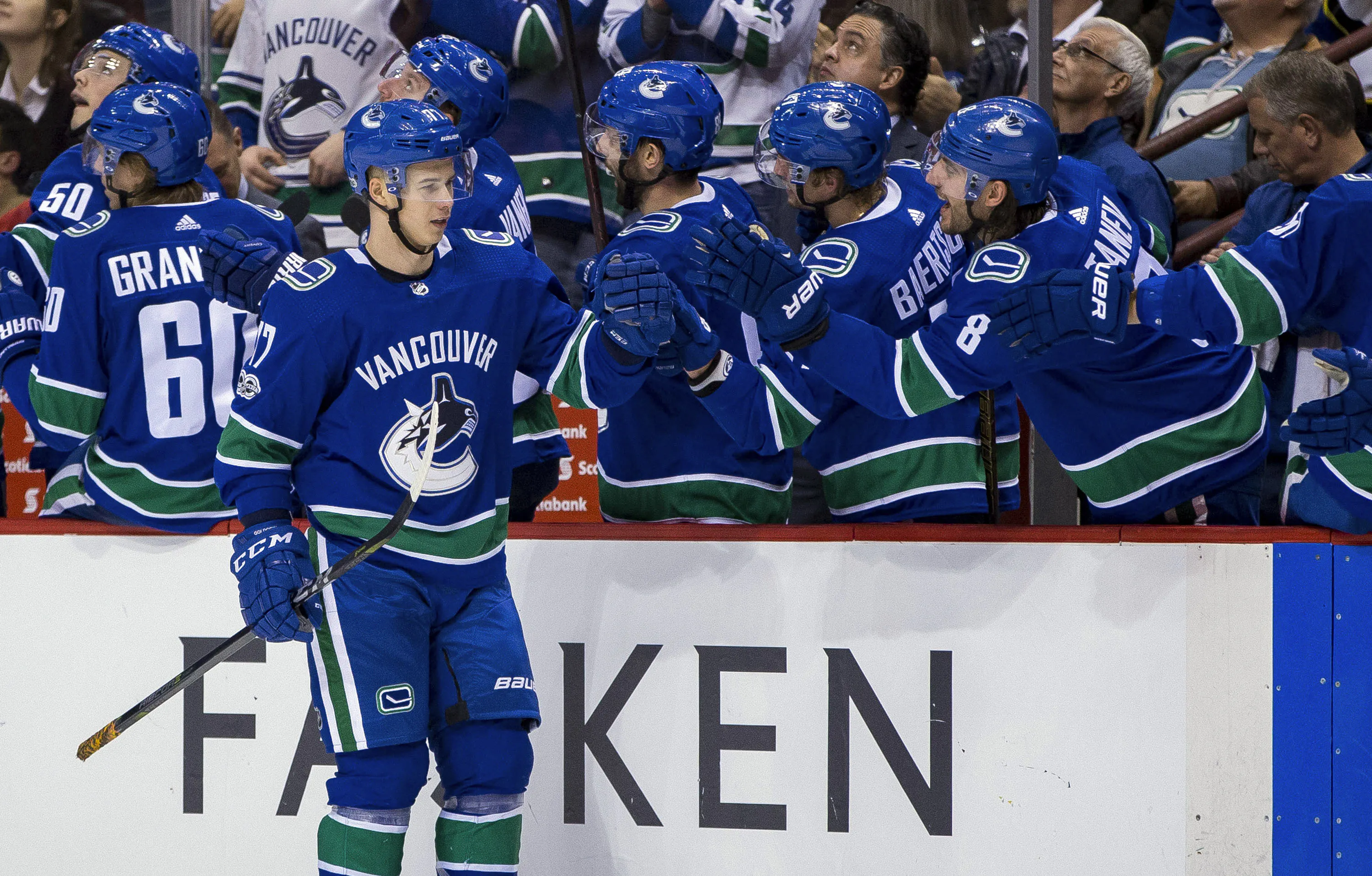The strength of a team’s prospect pool is usually inversely correlated with winning, and the Canucks are no exception. As Vancouver establishes itself as a perennial bottom feeder, the light at the end of the tunnel grows brighter year by year.
The pressure of that optimism bears on the shoulders of the young prospects eager to solidify themselves as NHL regulars. It’s exciting for fans to hear about the next crop of young guns looking to make waves, but equally important is tracking the progress of those that have already arrived.
One of those players under the microscope is Nikolay Goldobin, a former 2014 first-round pick acquired by the Canucks at last year’s trade deadline for Jannik Hansen. The 22-year-old Russian had already established himself as a prolific minor league scorer, posting 41 points in 46 AHL games prior to joining the Canucks’ organization.
The concern heading into this season was that Goldobin hadn’t translated his success to the NHL level, where he owned just five points in 21 career games — 14 of the games with the Canucks. Therefore, the goal was for Goldobin to make his mark as an NHL regular — an objective that yielded underwhelming results up until a month ago.
Officially seen enough of Goldy. Don’t need the rest of the season, thanks.
— Jason Brough (@JasonBroughTSN) March 8, 2018
The pessimism may have been premature, as Goldobin notched four goals and seven points to close out the final 11 games of the season. Overall, he tallied 14 points in 38 games, which turns out to a 30 point scoring pace if prorated over a full season. It’s made all the more impressive when you consider that Goldobin averaged just 12:20 TOI per game.
There’s an argument to be made for an increase in ice-time, but a combination of improved play and injuries already had Goldobin on that path — a trend that should carry over to next season if he maintains the same level of play.
The uptick in ice-time is important, but so to was Goldobin’s regular inclusion in the lineup period. Injuries certainly forced Canucks head coach Travis Green’s hand, but credit to the first-year coach for giving Goldobin opportunities on the top-line in Brock Boeser’s absence, in addition to increased powerplay time.
Goldobin was very efficient with the increased opportunities, finishing behind Bo Horvat as fourth highest on the team when looking at five-on-five primary points per hour.
The team as a whole was significantly more effective offensively with Goldobin on the ice; taking shot attempts from high danger areas at a higher rate relative to the club’s average.
Vancouver’s offensive potency with Goldobin deployed is statistically backed as well, with the 22-year-old possessing the second and third highest rates on the team for producing unblocked shot attempts and scoring chances.
All that shouldn’t come as a surprise given Goldobin’s offensive toolkit, but where one does ask questions is with his traditionally inconsistent defensive game. He’s been criticized in the past for lack of engagement away from the puck, weak effort along the boards in puck battles, and poor overall defensive awareness. Those concerns appear valid to some degree when looking at both game footage and underlying metrics; the latter of which we’ll analyze today.
Goldobin was plagued with terrible defensive luck, owning a team-low .881 on-ice five-on-five save percentage– one that’s not even close to the second lowest .907 mark held by Chris Tanev.
Having said that, Goldobin’s team-worst expected goals against rate tells us that his defensive game was porous even when accounting for his tough luck. What the aggregate data doesn’t highlight though, is the strides he made away from the puck as the season went on. Fortunately, we can split the data to shed some light on those improvements.
Normally I wouldn’t put so much stock into a 15 game sample, but the eye test checked out too, with legitimate indications that Goldobin was learning from his prior mistakes.
Another encouraging sign is that he had a positive impact on most of his teammates’ ability to control possession.
Particularly interesting is the chemistry that he seemed to find with Bo Horvat who also happened to be his most common linemate.
The duo controlled 54.8% of shot attempts in 200 minutes TOI together, with both suffering dramatically when playing away from each other. Goldobin was hit hardest, controlling just 42.8% of shot attempts without Horvat, though the latter’s Corsi % dropped nearly 10% away from Goldobin as well.
The numbers look even better when you add Brock Boeser to the equation.
Goldobin, Horvat, and Boeser only spent 56 minutes together, but the underlying metrics tell us that they did extremely well together. The on-ice numbers also suggest that Goldobin complemented the top-line with Horvat and Boeser better than Sven Baertschi.
Conclusion
Nikolay Goldobin made some definite strides this season, improving on both sides of the ice as the season wore on. He gave the Canucks efficient even-strength scoring while contributing to the team’s overall ability to retain puck possession.
If Goldobin can continue to play like he did down the stretch, there’s no reason to believe that he can’t be a regular top-9 contributor next season. With the Sedins hanging up the skates next season and Sven Baertschi’s future up in the air, Goldobin will certainly get every opportunity to make that happen.


